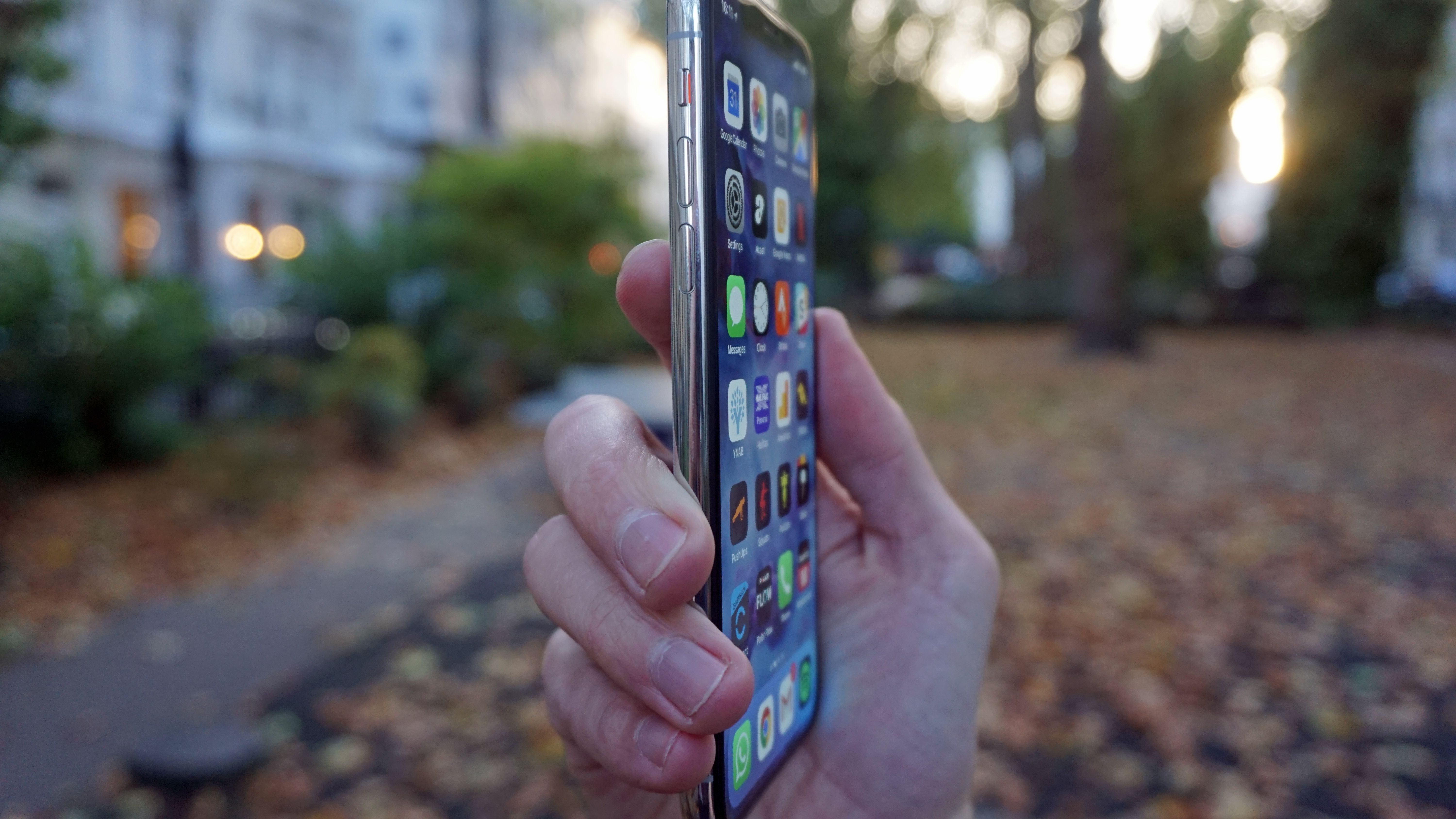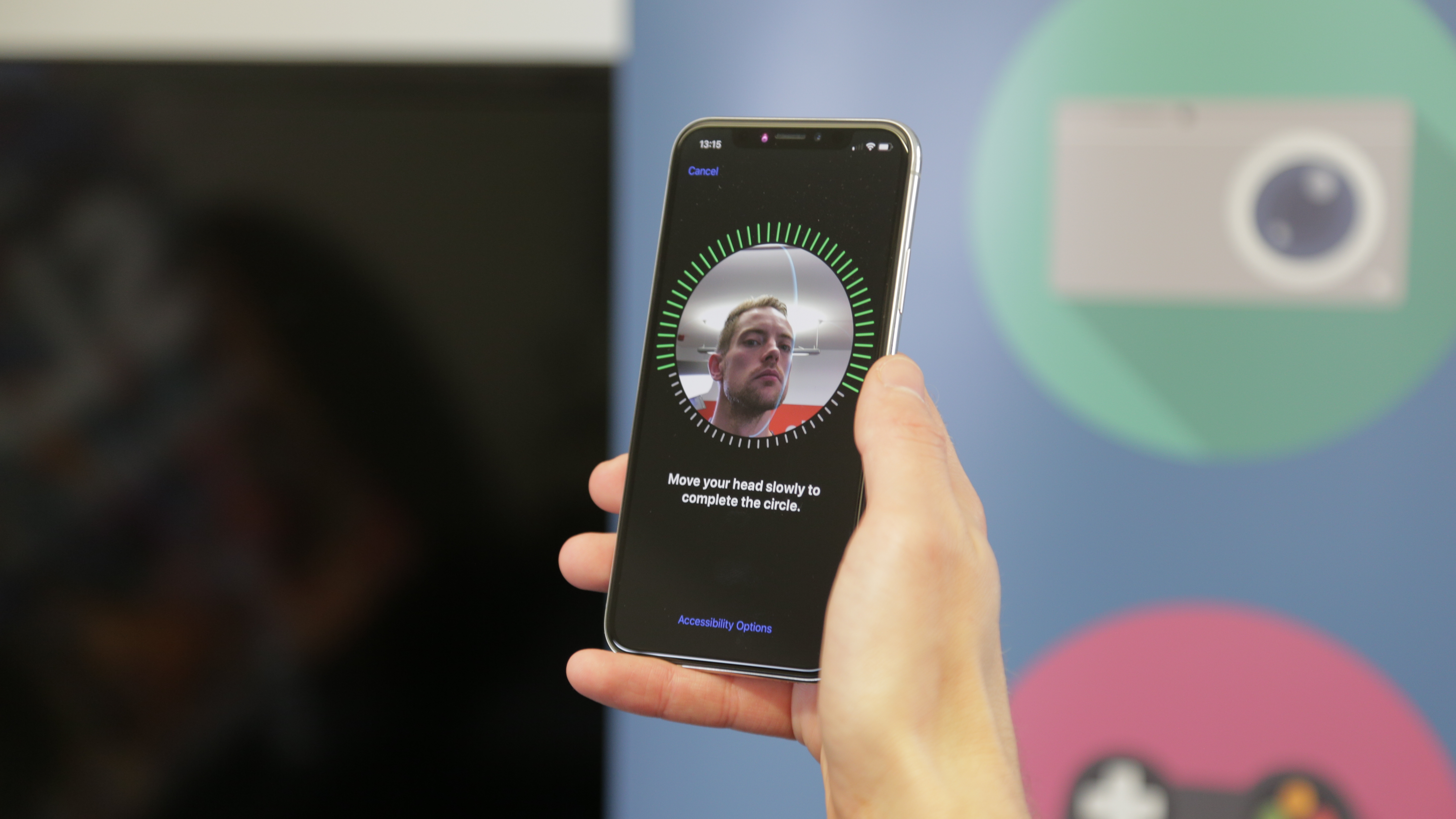I’ve been carrying the new iPhone X around for 24 hours, and while it’s nowhere near long enough to write a full review, it’s been an interesting enough glance into what Apple is trying to do with the iPhone to share some early thoughts.
My main question when reviewing this phone is simple: is this really the ‘future of smartphones’, as Tim Cook suggested it is?
This is a phone that loses a lot of the tried and tested features of previous handsets, so what’s really new here, the stuff that would impress those who want to know what the new iPhone is really like?
In the hand
While I’d already picked up the iPhone X and had a good fondle at September’s launch event out in Cupertino, I was still taken with how heavy it was when I removed it from the box.
The outer rim, encased in polished stainless steel on the silver model I’m using, feels chunky and rounded, but in a premium way, rather than being overly large in the hand. It harks back to multiple iPhone designs of the past, and will feel familiar to most.

There’s a glass back, like that found on the iPhone 8 pairing, and it feels more expensive in the hand where it wraps into the metal rim. The glass back also allows for wireless charging, which is the whole point of changing the material on the rear of the phone.

Interestingly, the camera bump is different to the one on the iPhone 8 Plus. It’s intriguing simply because while both have the same dual-sensor array, the protrusion on the 8 Plus rolls smoothly into the chassis, where the iPhone X’s bump is sharp and angular.
Well, I say interesting. You might not even care. Just letting you know.
Face ID impresses
Right – straight into the big one. Apple has ditched Touch ID for the iPhone X, the fingerprint sensor making way for facial recognition.
That’s what the notch at the top of the phone is all about, the bezel-less design interrupted by an obvious chunk bitten out the top. It houses the TrueDepth camera, an advanced piece of kit that’s able to map the human face with very high accuracy.
During the set-up process the iPhone X asks you to look into the camera, spin your head around a couple of times and the process is done – and this efficiency is crucial.
The fingerprint sensor worked just fine – it woke the phone up, it securely let you into the handset… so why change it at all?

Well, the way I realised that I’m not going to have an issue with Face ID is that, within 10 minutes, I realised that I hadn’t turned it on, as I was getting into my phone whenever I woke it up.
Except I had enabled it. It was that quick.
Over the next 24 hours, I tested Face ID in the pitch black (slower, but still fine), first thing when waking up in a dark room in the morning (no slowdown whatsoever) and when walking… again, it picked up my face fine.
In fact, the only issue I could find is when the phone is flat on your desk and you can’t open it using a thumb to have a look at a notification. You’ll need to lift the phone up, and comparing the speed of unlocking with an iPhone 8 Plus, it’s definitely quicker to open up the phone with a thumb over Face ID.

But – especially given the nightmares I’ve experienced with the same face recognition techniques on the Samsung Galaxy Note 8 – Apple has executed facial recognition really, really well.
The screen
Does the iPhone X have a good screen? If you’re talking to one of the legion of Android fans, you’ll probably get a shrug. They’ll point to the fact that Samsung phones have been using AMOLED technology for years, with higher resolution, and that displays with more cinematic aspect ratios are nothing new.
But that misses the point of what Apple has always been about. While the fact that the base-level iPhone 8 has a standard HD screen still rankles (for that cost, we’d expect more pixels) it’s always been about the quality of the display, not the spec sheet.
And given the nightmare Google has been suffering with the Pixel 2 XL, with elements of the display burning in and terrible viewing angles, Apple has shown its prowess in making a screen that looks good and works well in equal measure - and given the display is the window into the thing you’re going to be looking at many, many times a day, getting this right is crucial.

So it’s fortunate for Apple that the iPhone X, with its 5.8-inch display, looks flawless. It’s far less color-rich than the Samsung Galaxy range, and you can’t tweak the way the colors look like you can on many Android phones, but no matter which way you look at the X you’re not going to see an unsightly blue tint.
Watching movies on this phone, with its Mobile HDR-enabled display, was supposed to be a dream, and it generally is. However, I’ve not noted that anything looks superb just yet, although I’ve not spent a great deal of time drilling into it.

One thing to note though: there’s not a lot of HDR content out there right now. Apple’s making a big deal of the fact that if you’ve bought any HD films on iTunes already they’ll be automatically upgraded to 4K HDR… but most of them aren’t enabled yet.
This is – presumably – because it’s not struck the right deals with the studios at the moment, but I’ve got reams of video from Marvel that would look amazing in HDR / Dolby Vision, and they’re still stuck in boring old HD versions right now.
Animoji
Why did Apple include the poo emoji in its new Animoji offering? I’m literally sending messages to my pals as a talking turd, and wondering what I’m doing with my life.
Rolling back for those that don’t know: Animoji is the new feature on the iPhone X, where the TrueDepth camera maps your facial movements and transposes them onto a talking emoji.
It’s incredibly accurate – every flick of your eyebrow, mouth or ear is mimicked on the screen perfectly, and it’s something that people just love playing with when picking up the iPhone X.

However, it’s not going to be a must-have feature, and I can see it going the way of the effects in iMessage… you’ll send a laser effect with your message on occasion when you remember it’s there, but it’s not going to be that often.
What does excite me is what developers will do with this camera – already Snap is showing some cool facial recognition (even if it is reminiscent of a comedy sketch demeaning Silicon Valley startups) and the ability to face-map will be a fun new tool for developers.
Apps need work, quickly
Let’s not be too unfair right now – the iPhone X isn’t out yet, so you wouldn’t expect a lot of developers to have re-coded their apps to work on the longer screen.
But they sorely need to, and quickly. When you’re looking at an app that’s coded for a ‘normal’ iPhone screen, the black bars above and below the display make it look like you’re just using an older device… just one shorn of the home button.
Of the mainstream apps I use, only Twitter has been optimized to actually fill the whole screen, and with something like Netflix a movie will sit quietly in the middle of the screen, with black bars all around.
A double-tap will fill the display back up again, and you’re into a really impressive, immersive image, taking up the whole screen. The notch at the top of the screen does get in the way though, annoying you in the periphery of your vision.
You’ll forget about it quickly, but it’s not ideal. While I get that this is where the powerful TrueDepth camera sits, it does spoil the all-screen effect somewhat. It would be better if movies didn’t spill around the camera notch.
You’re still getting a wide cinematic effect in this mode, and it would all look a lot cleaner.
No camera improvements, but that's no bad thing
This is an iPhone camera – and a really good one. If you’ve owned an iPhone before, you’ll know what I mean – it takes fast, natural-looking images that simply look good on the screen.
Actually, scratch that – while the photos themselves aren’t noticeably better in the first 24 hours compared to the iPhone 8 Plus, they look so much better on the OLED screen, with the improved contrast ratio giving everything a premium sheen.
One thing I have noticed: while both cameras now have optical image stabilization, and the telephoto lens has a wider aperture for improved low-light capture, the iPhone X will still default to the main, wide-angle lens and choose digital zoom over optical when things get a bit darker.

That seems to be because it’s prioritizing picture quality overall – rather than offering a ‘proper’ zoom with a darker photo, it’s gone for the better snap.
The front-facing camera – the 7MP sensor for taking selfies – is really impressive now, thanks to its ability to actually sense depth – you can get the same background blurring effects from the front camera as the rear one, and picture quality improves massively as a result.
However, I don’t really want to comment too much on the camera before the full review has been conducted – the iPhone isn’t a phone filled with settings to tweak, so it needs a full run-down in multiple scenarios to really see where it’s strong and weak.
So, what do we think?
The iPhone X is the most impressive iPhone I’ve ever held – I’m almost annoyed that the iPhone 8 and 8 Plus existed first, because they’ve taken some of the shine off the launch.
The fact that I’ve already played with handsets using the A11 Bionic chip at the heart of this phone detracts from the fact that the iPhone X is so powerful. And the fact this isn’t the first iPhone with wireless charging is a shame too – all this coming with the iPhone X would have been brilliant.
But even without that, the fusion of much-improved screen, face-mapping technology and condensed design means the iPhone X is the biggest jump forward for the iPhone ever. If the iPhone 8 wasn’t on sale, and if the iPhone X didn’t cost so much, I’d be tempted to say that the rest of the competition should shut up shop and go home.

Because while multiple Android phones offer better specs or features than the iPhone X, that’s not a consideration for those looking to remain in the iPhone ecosystem, and very few Android phones wrap said features together in such a cohesive way.
Again, this is only a first impressions piece with the iPhone X – there’s a lot more to learn about this phone. But the main concern that many people, including myself, had – that Face ID wouldn’t work and would make it almost impossible to get into the iPhone X – has turned out to be nothing to worry about, and creating such powerful facial recognition is really impressive. Apple has managed something its rivals simply could not.
The iPhone X is the most expensive flagship phone on the market by some distance - but early impressions are that it’s going some way to justifying that cost.
